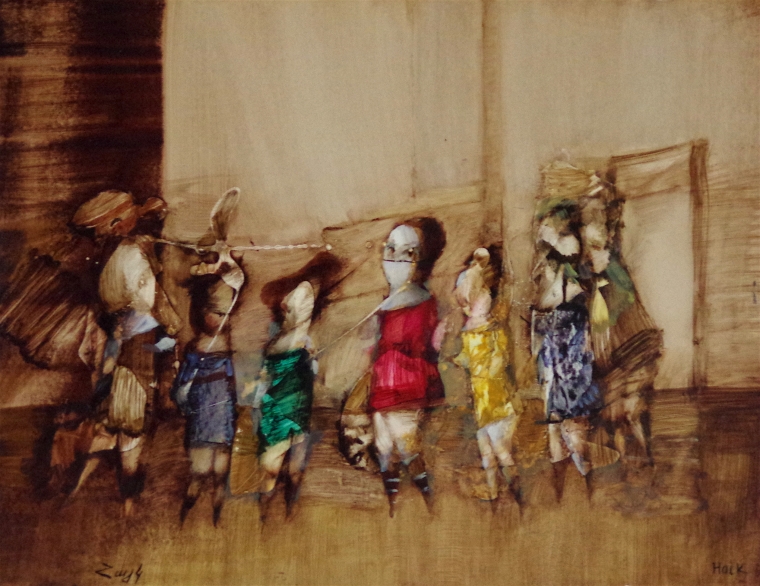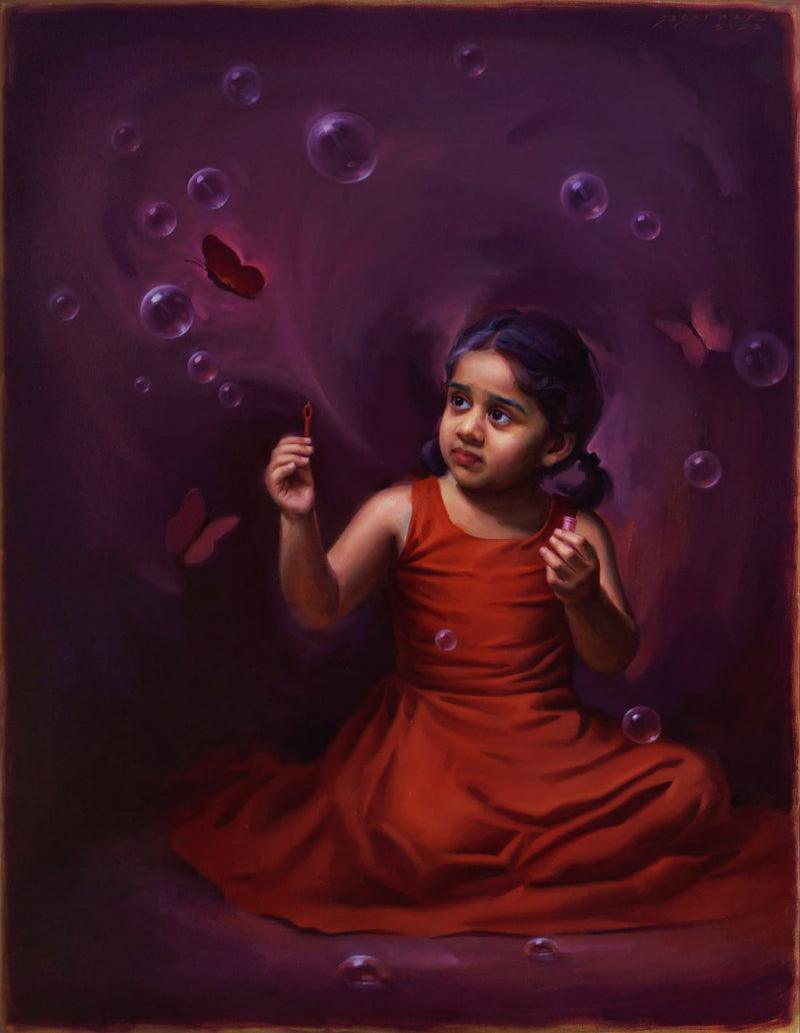Revealing the Tricks Behind Expressive Figurative Oil Painting Styles
Revealing the Tricks Behind Expressive Figurative Oil Painting Styles
Blog Article
The Advancement of Metaphorical Oil Paint: Comprehending Its Historical Value and Modern Interpretations
The development of metaphorical oil painting offers as a compelling lens with which to examine the interaction in between creative expression and historic context. Contemporary artists, drawing from this abundant heritage, are now reinterpreting the human figure in means that challenge standard stories.
Origins of Metaphorical Oil Paint
The origins of figurative oil paint can be mapped back to the early Renaissance in Europe, particularly in the 15th century. The advancement of oil paint permitted for greater depth of color and detail, improving the realistic look and vibrancy of their job.

In this transformative age, numbers were commonly illustrated within contextually rich atmospheres, showcasing not only their physical attributes yet additionally their mental states. Pioneers such as Jan van Eyck and Titian harnessed the medium's flexibility, employing layering strategies to accomplish brightness and texture. This innovation facilitated the representation of complex materials and the subtleties of complexion, contributing to the development of portrait and narrative scenes.
Additionally, the Renaissance focus on humanism promoted a recognition for individuality, which subsequently influenced artists to develop more vibrant and relatable figures - figurative oil painting. Consequently, figurative oil paint became an effective car for narration and emotional involvement, preparing for future imaginative motions and designs
Secret Historic Movements
Substantial historical activities have formed the evolution of figurative oil paint, each contributing special philosophies and methods that increased the medium's opportunities. The Renaissance noted a critical minute, emphasizing realistic look and the human kind, with artists like Leonardo da Vinci and Michelangelo pressing the boundaries of anatomical precision and perspective. Following this, the Baroque age brought significant contrasts of light and shadow, exhibited by Caravaggio, who instilled religious motifs with extreme emotionality.
The 19th century presented Romanticism and Realistic look, where musicians such as Delacroix and Courbet challenged timeless suitables, concentrating on individual expression and everyday life. The introduction of Impressionism additionally reinvented the tool by highlighting the results of light and color, causing a separation from typical depiction.
In the early 20th century, movements like Expressionism and Cubism redefined figurative paint through abstraction and the exploration of emotional depth. Each of these motions not just mirrored the social adjustments of their times yet also laid the groundwork for contemporary interpretations. The interplay between these historical motions has produced a rich tapestry of approaches and designs, affecting modern-day musicians in their search of recording the human experience on canvas.
Strategies and Products Development

Throughout the Baroque period, strategies such as chiaroscuro and sfumato emerged, boosting the emotional vibration of figurative make-ups. Artists started to experiment with lusters and impasto, manipulating appearance and luminance. By the 19th century, developments like the usage of pre-mixed paints in tubes transformed accessibility, enabling musicians to paint en plein air and catch click to read more the short lived effects of light.
The 20th century observed the introduction of synthetic pigments and mediums, which expanded the combination and modified the consistency of oil paints. Additionally, the expedition of new application methods, such as scheme knives and brushes of varying tightness, more diversified creative expression. Jointly, these developments show the advancing relationship between materials, methods, and the imaginative vision integral in figurative oil painting.

Contemporary Analyses
Contemporary analyses of metaphorical oil paint show a vibrant dialogue between custom and development, where artists challenge established norms and discover varied motifs. This advancement manifests in numerous ways, as contemporary musicians blend timeless techniques with modern principles, commonly resolving social, political, and individual stories.
Several experts attract motivation from historical jobs, yet they instill their pieces with contemporary perspectives, making use of the human kind as an automobile for commentary on identity, sex, and society. Artists progressively try out abstraction, distortion, and mixed media, which enables a more comprehensive interpretation of the number and its context.
In addition, using vivid shade combinations and unconventional make-ups commonly serves to interfere with conventional viewing experiences, prompting important engagement from target markets. This shift in emphasis prolongs beyond aesthetics; it mirrors an expanding awareness of the complexities of human experience in an interconnected world.
As figurative oil paint remains to evolve, it continues to be an important tool for checking out the nuances of contemporary life, personifying both a respect for heritage and a dedication to modern idea. The result is an abundant tapestry of expression that resonates with the intricacies of the contemporary human condition.
Influence On Modern Art
The impact of figurative oil painting on modern art is profound, as it has actually continually influenced a myriad of imaginative movements and techniques throughout the 20th and 21st centuries. From Expressionism to Surrealism and beyond, the expedition of the human number has stayed a main theme, permitting artists to communicate intricate emotions and stories. This emphasis on figurative depiction her explanation has brought about a re-examination of conventional methods, causing innovative strategies that mix realism with abstraction.
Additionally, modern artists have actually welcomed figurative oil paint as a method to deal with social and political problems, using the tool to test perceptions of sex, culture, and identity. The resurgence of interest in figurative operate in current years reflects a longing for link in a significantly electronic world, where human experience and emotion are critical.
Additionally, the discussion in between figurative oil painting and modern art appears in the jobs of musicians such as Kehinde Wiley and Jenny Saville, who attract on historic recommendations while infusing their items with modern relevance. Ultimately, metaphorical oil paint continues to shape and redefine modern-day creative expression, underscoring its long-lasting relevance in the art world.
Conclusion
The development of metaphorical oil painting emphasizes its historical significance and versatility across numerous creative movements. From the naturalism of the Renaissance to the stirring expressions of More Help the Baroque and the innovative strategies of modernity, this medium has actually constantly changed. Contemporary interpretations mirror unusual structures and vivid colors, cultivating important engagement with political and social themes. Eventually, figurative oil painting continues to be an important tool for exploring the human experience, reverberating profoundly in today's digital landscape.
The advancement of figurative oil painting serves as an engaging lens with which to analyze the interplay in between creative expression and historic context.Considerable historical movements have formed the evolution of metaphorical oil paint, each adding one-of-a-kind philosophies and techniques that broadened the medium's opportunities.As historic activities formed the trajectory of metaphorical oil paint, the strategies and products employed by artists have also undergone significant changes. figurative oil painting.The impact of figurative oil painting on modern art is profound, as it has continually inspired a myriad of artistic movements and techniques throughout the 21st and 20th centuries.The advancement of metaphorical oil paint highlights its historical relevance and versatility across various artistic movements
Report this page